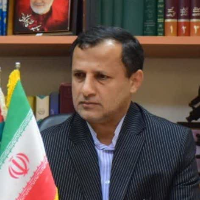Zoning of leaf burn percentage of tree canopy using UAV and Sentinel 2 images in Deland Forest Park, Golestan provinceAbstract
Forests are subject to a variety of disturbances that adversely affect their health. There are a number of disturbances that cause trees to become weak and dry in the long run. One of them is the stress caused by burning leaves, which typically takes place during very hot summers. The identifying and monitoring of the expansion of its level is therefore very important. As one of the important information sources, remote sensing data can be used to identify it. It is possible to capture UAV images quickly and at desired times, but they have limitations such as the captured surface and the sensor's spectral range. In identifying and preparing a map of leaf burns, tree crowns, and other damages, the combined use of UAV images and satellite images with a high resolution can be helpful. The purpose of this research is to investigate and identify leaf burn of the canopy of trees using UAV images in a part of Deland Forest Park in Golestan province and combining it with Sentinel 2 images to prepare a classification map of the percentage of leaf burn in the tree canopy of the area in a wider area.
RGB UAV images were taken in Deland Forest Park and processed appropriately. Also, Sentinel 2 images were prepared and analyzed geometrically and radiometrically. Ground truth of trees with leaf burn and healthy trees was done in September 1400 selectively and with high precision differential global positioning device. The support vector machine algorithm was used to classify UAV images into three categories: trees with leaf burn, healthy trees, and clear trees. The classification of the main UAV images along with vegetation indices obtained from UAV spectral bands and with selected spectral indices was also repeated. Finally, the prepared maps were evaluated for accuracy. In the second step, for preparing a map of the classes of leaf burn percentage of the canopy cover on a wider level and in the whole park, using the image of Sentinel 2, based on the classified map of the UAV, which has the highest accuracy, as a training example in the regression model of the random forest and calibration. Finally, a map of leaf burn intensity classes of the entire Deland Forest Park area was prepared using the prepared model.
UAV image classification results indicated that UAV visible spectrum bands are able to distinguish healthy trees from trees with leaf burn with an accuracy of 89.62% and a Kappa coefficient of 0.84 for the classification of UAV images. By combining the main bands and 9 vegetation indices, the results of the research decreased slightly (overall accuracy 87.40% and kappa coefficient 0.81); however, when the main UAV bands were combined with the best vegetation indices (EGMRI, EGI and
- حق عضویت دریافتی صرف حمایت از نشریات عضو و نگهداری، تکمیل و توسعه مگیران میشود.
- پرداخت حق اشتراک و دانلود مقالات اجازه بازنشر آن در سایر رسانههای چاپی و دیجیتال را به کاربر نمیدهد.



